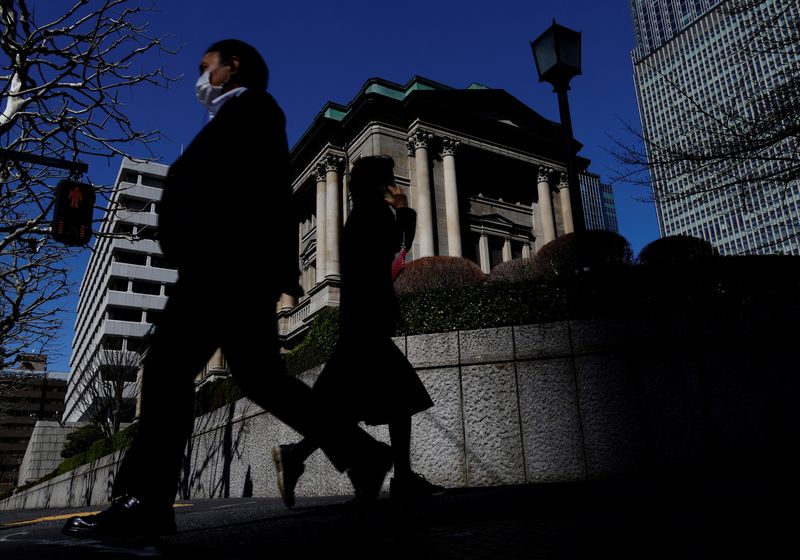By Leika Kihara
TOKYO (Reuters) -Bank of Japan policymakers discussed the need for caution over near-term interest rate hikes with some voicing concern over unstable financial markets and the U.S. economic outlook, a summary of their September meeting showed on Tuesday.
Even a proponent of future rate increases called for patience in pulling the trigger, the summary showed, highlighting a dovish shift in the nine-member board that diminishes the chance of a hike in October.
“I remain convinced that if it’s confirmed that there will be no major downward revision to our outlook, it’s desirable to raise rates without taking too much time,” one member was quoted as saying at the September meeting.
“But rate hikes should not be an end in itself,” the member said, calling for the need to wait for the “appropriate” timing in pushing up borrowing costs.
Given economic and market uncertainties, it was undesirable for the BOJ to raise rates further at this point as doing so might suggest the central bank was shifting to a full-fledged monetary tightening cycle, another opinion showed.
“Overseas economic uncertainties have heightened. We should scrutinise overseas and market developments closely for the time being,” a third opinion showed, adding that rate hikes can wait until such uncertainties diminish.
At the September meeting, the BOJ kept short-term rates steady at 0.25% and its governor said it could afford to spend time eyeing the fallout from global economic uncertainties, signalling it was in no rush to raise borrowing costs further.
The BOJ next meets for a rate review on Oct. 30-31, when the board also releases fresh quarterly growth and price forecasts that will be crucial to the bank’s long-term policy path.
“In conducting monetary policy, it’s necessary to give due consideration to downside risks to Japan’s economy and monitor data carefully,” a fourth opinion showed, highlighting how the BOJ’s focus was shifting away from the risk of an inflation overshoot towards underpinning a fragile recovery.
The BOJ ended negative rates in March and raised short-term borrowing costs to 0.25% in July on the view Japan was making progress towards durably achieving its 2% inflation target.
The BOJ’s rate hike in July and Governor Kazuo Ueda’s hawkish comments, coupled with weak U.S. labour market data, triggered a spike in the yen and stock market rout in early August. Since then, BOJ policymakers have stressed the need to take into account the economic fallout from market volatility.
The BOJ’s Sept. 19-20 policy meeting came a day after the U.S. Federal Reserve’s decision to deliver an oversized reduction in borrowing costs.
The departure of Prime Minister Fumio Kishida, who appointed Ueda and nodded to the BOJ’s policy normalisation, adds to uncertainty over the bank’s efforts to push up interest rates to levels deemed neutral to the economy – which one board member said was at least 1%.
At the September meeting, one member said the yen’s sharp reversal from past weaknesses could hurt exports and discourage manufacturers from raising wages, the summary showed.

“Uncertainties have heightened about the U.S. economy and the pace of rate cuts by the Fed. Attention needs to be paid to the possibility that these factors will have a negative impact on the yen’s exchange rates and corporate profits in Japan,” another opinion showed.
“As for the next rate hike, I’m focusing on developments in consumer inflation, momentum toward next year’s wage talks and U.S. economic developments,” a separate opinion showed.
